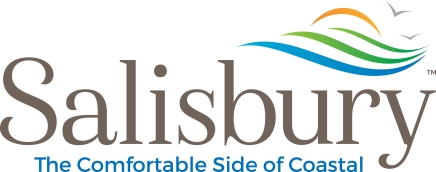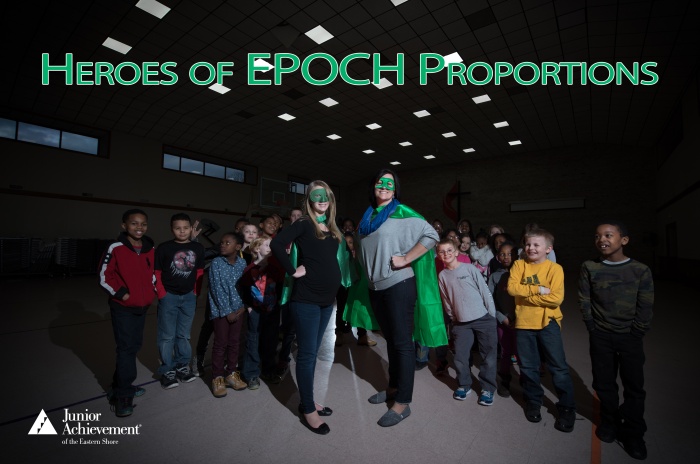Branding for Change
“We are Salisbury, Maryland, and our town was born from the headwaters of the Wicomico River.” This is how the new brand statement of Salisbury begins. It tells of the city’s origins. But, as familiar as its descriptive words sound, this declaration is a new addition to the city’s identity. And this identity, according to Salisbury Mayor Jake Day, is something the city has struggled and failed to define for many years.
City branding is not marketing. It is a recognition of a place’s identity, its mission, and vision. It is a promise of change. It visually references a place’s people and reflects them back to the outside world. A logo or font will not change a city, but can act as a motivator for growth and action—a symbol. The branding of a city incorporates its location, culture, diversity, and uniqueness and creates a statement about the city itself. It declares without hesitation who it is.

In 1977 New York State was nearly bankrupt. Businesses were leaving. Crime in New York City was out of control. The New York State Department of Commerce, in a tourism push, enlisted volunteer Milton Glaser to create a logo to redefine the city. In three letters and one symbol, Glaser pulled off the most successful rebranding of a city ever documented. His creation became a mantra to give the residents a sense of pride, potential, and belonging. The slogan encouraged wary tourists to take a chance on the embattled state, and reminded community members why they cared. Thanks to Liza Minelli belting out an accompanying song on TV commercials, and people carrying home buttons emblazoned with the logo to share with their friends and family, tourism boomed. The economy rebounded and people began caring for their city once more.
With the issue of branding, Salisbury’s obstacle remained that it did not yet have an identity. The prominence of the issue became clear when two separate consultants were each working on signage, one for Main Street, the other for bike pathways. They presented the city with sleek, modern designs reminiscent of downtown Seattle, and also rustic southwestern-styled imagery. When met with resistance that these designs were definitely not “Salisbury,” the consultants replied in agreement, and then stated the core problem succinctly, “You don’t know who you are.”
It was not the identity of the city or its officials that was on the table for definition. It was the community of Salisbury that cried for a declaration of self. Why should people come? What does Salisbury have to offer? What makes it alluring and memorable? Different from a company with a product, the identity of a city must come before the final creation. It is the simplest step in a much grander scheme, but with cities, branding cannot come at the end of the process. “With a place, we’d better know what our identity is first. And if we can’t articulate that nobody is ever going to visit here because we’re never going to convince them to come here,” states Mayor Day, “If we can’t talk about the good, and the values, and the assets, the traits, and the things that make us special, then we’d better give up right now… If we’re not singing our praises no one is going to do it for us.”
In the new vision for Salisbury, there are four facets to its identity
- “Not on the coast, but real close.” Between the Atlantic Ocean and the Chesapeake Bay, Salisbury cannot claim a shoreline, but the city is still connected to these bodies of water, not only through the iconic Wicomico River, but through a huge percentage of industry that serves these two coastal areas.
- Comfortable. Salisbury is a pleasant, easy place to live, work, and raise a family. It is comfortable.
- The heart and Soul of Delmarva. With a strong artistic core driving its downtown, as well as a hub for transportation, education, and economic growth, Salisbury retains its position as the capital of the Eastern Shore.
- Maryland’s Coastal College Town. Salisbury graduates 2,000 intelligent, degree-holding students every year. Acknowledging that Salisbury is a college town and embracing the student population will help stop the Brain Drain on the Shore, and ultimately boost the economy.
With the understanding of what Salisbury is, a plan for growth and change could finally be made. Creating a homogenous city is key. Mayor Day notes that towns like Berlin have appeal because of unifying characteristics within the city. Signage, trees, benches, waste cans—what Day calls street furniture—will all be made uniform, first downtown, and eventua
lly across the entire city. This will orient people to where they are. Instead of feeling as if they could be in any U.S. town, they will recognize, by the consistency of these street furnishings, that they are in Salisbury, Maryland. Marketing across all media platforms will draw in new visitors who will be able to see and understand the city they have traveled to visit, and encourage them to spend time, and return.
Crafting the identity is the first step. Building onto it will invariably take years. To make Salisbury a destination, a unique place, and an economic powerhouse is the endgame. Bringing people to the city will ensure positive growth for Salisbury, the county, and the people who live and work there.
Welcome to Salisbury, Maryland.


 JoAnn Blackmon and Erin Sheehan of the Epoch Dream Center — March 2016’s JA Heroes
JoAnn Blackmon and Erin Sheehan of the Epoch Dream Center — March 2016’s JA Heroes